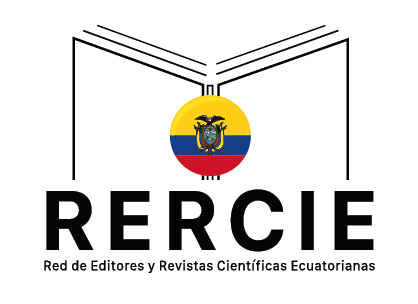El Empleo Protegido a favor de las personas con discapacidad en el sector privado ecuatoriano
DOI:
https://doi.org/10.36097/rsan.v1i55.2527Palabras clave:
Empleo Protegido, desarrollo integral, derecho al trabajo, discapacidad, inclusividadResumen
El Empleo Protegido es una de las medidas de acción positiva adoptada con la finalidad de lograr la inclusión laboral de las personas con discapacidad mediante los Centros Especiales de Empleo (CEE). El estudio tuvo como objetivo analizar la implementación del Empleo Protegido como instrumento de acceso al empleo para las personas con discapacidad en el sector privado en el Ecuador. La metodología utilizada fue cualitativa orientada principalmente a la descripción, comprensión, interpretación y justificación de la situación jurídica ecuatoriana, comparada con la doctrina y legislación española y chilena. Los resultados evidenciaron que, en el Ecuador, el mecanismo del Empleo Protegido es aún desconocido y prevalece la cuota de reserva del 4% en el empleo ordinario para personas con discapacidad, lo que lleva a contrataciones meramente cumplidoras de obligaciones legales y no garantiza el trabajo digno. La falta de CEE se atribuye a la ausencia de incentivos tributarios y políticas de inclusión por parte del Estado, limitando así el desarrollo de la inclusión laboral adecuada tanto en el sector privado como público. Sin embargo, los CEE buscan la integración laboral equitativa de personas con discapacidad, promoviendo su sostenibilidad económica y social mediante el desarrollo de habilidades.
Descargas
Referencias
Alonso, B. (2017). El empleo protegido y ordinario de los trabajadores con discapacidad: la perspectiva del derecho intenro español. Panorama social, 26, 57-67. Obtenido de https://www.funcas.es/wp-content/uploads/Migracion/Articulos/FUNCAS_PS/026art05.pdf
Código del trabajo. (2005, 16 de diciembre). Registro Oficial Suplemento 167. https://www.trabajo.gob.ec/wp-content/uploads/downloads/2012/11/C%C3%B3digo-de-Tabajo-PDF.pdf
Constitución de la República del Ecuador . (2008, 20 de octubre). Registro Oficial 449. https://www.oas.org/juridico/pdfs/mesicic4_ecu_const.pdf
Esteves, A. (2020). El impacto del covid-19 en el mercado de trabajo de ecuador. Mundos Plurales, 7 (2), 35-41. https://doi.org/10.17141/mundosplurales.2.2020.4875.
Fundación General Ecuatoriana. (2012). Centros Especializados de Empleo. https://n9.cl/jlcg8
Fundación Adecco. (2022). Diferencias entre empleo ordinario y empleo protegido. https://fundacionadecco.org/azimut/diferencias-entre-empleo-ordinario-y-empleo-protegido/
Laloma García , M. (2007). Empleo protegido en España. Análisis de la normativa legal y logros alcanzados. Serie: Telefónica accesible nº 3. Ediciones Cinca. https://n9.cl/9xjso
Ley Orgánica de Discapacidades. (2012, 25 de septiembre). Registro Oficial Nº 796 . https://www.consejodiscapacidades.gob.ec/wp-content/uploads/downloads/2014/02/ley_organica_discapacidades.pdf
Naciones Unidas de Derechos Humanos.(2014 ). Convención sobre los derechos de las personas con discapacidad. Publicaciones de las Naciones Unidas. https://www.un.org/esa/socdev/enable/documents/tccconvs.pdf
O’Reilly, A. (2007). El derecho al trabajo decente de las personas con discapacidad. Oficina Internacional del Trabajo https://www.ilo.org/wcmsp5/groups/public/@dgreports/@dcomm/@publ/documents/publication/wcms_091966.pdf
Organización Internacional del Trabajo. (2008). Obtenido de https://www.ilo.org/wcmsp5/groups/public/@ed_emp/@ifp_skills/documents/publication/wcms_106328.pdf
Organización Internacional del Trabajo. (2020). OIT Convenio sobre la readaptación profesional y el empleo (personas inválidas) núm. 159, y la Recomendación núm. 168. https://www.ilo.org/wcmsp5/groups/public/---ed_emp/---ifp_skills/documents/publication/wcms_830414.pdf
Secretaría Nacional de Planificación. (2021). Plan de Creación de Oportunidades 2021-2025. https://observatorioplanificacion.cepal.org/sites/default/files/plan/files/Plan-de-Creaci%C3%B3n-de-Oportunidades-2021-2025-Aprobado_compressed.pdf
Ríos, M. I. (2015). El Concepto de Discapacidad: De la Enfermedad al Enfoque de Derechos. Revista CES Derecho, 6(2), 46-59. http://www.scielo.org.co/scielo.php?pid=S2145-77192015000200004&script=sci_arttext
Imacaña, S. A. y Villacrés , M. (2022). La inclusión laboral de las personas con discapacidad en Ecuador. Sociedad y Tecnología, 5(51), 170-183. https://doi.org/10.51247/st.v5iS1.241
Visier, L. (1998). Relaciones laborales en los sistemas de trabajo protegido. Revista Internacional del Trabajo, 117(3), 371-390. https://www.ilo.org/public/spanish/revue/download/pdf/visier.pdf
Descargas
Publicado
Número
Sección
Licencia
Derechos de autor 2023 Ana Jessenia Arteaga Moreira, Xiomara Marcela Silva Briones, Melanie Briggitte Véliz Vergara

Esta obra está bajo una licencia internacional Creative Commons Atribución-NoComercial-SinDerivadas 4.0.















